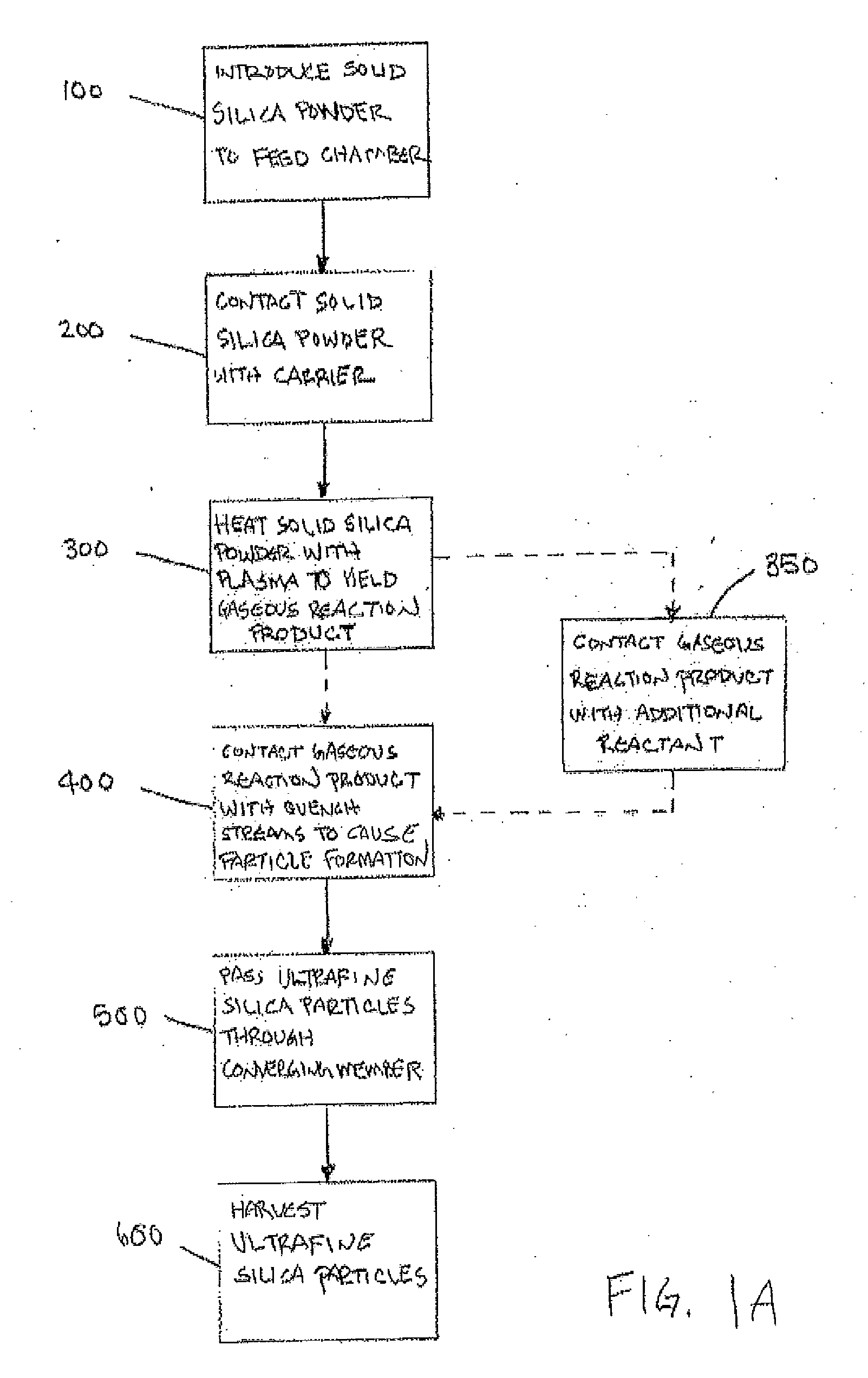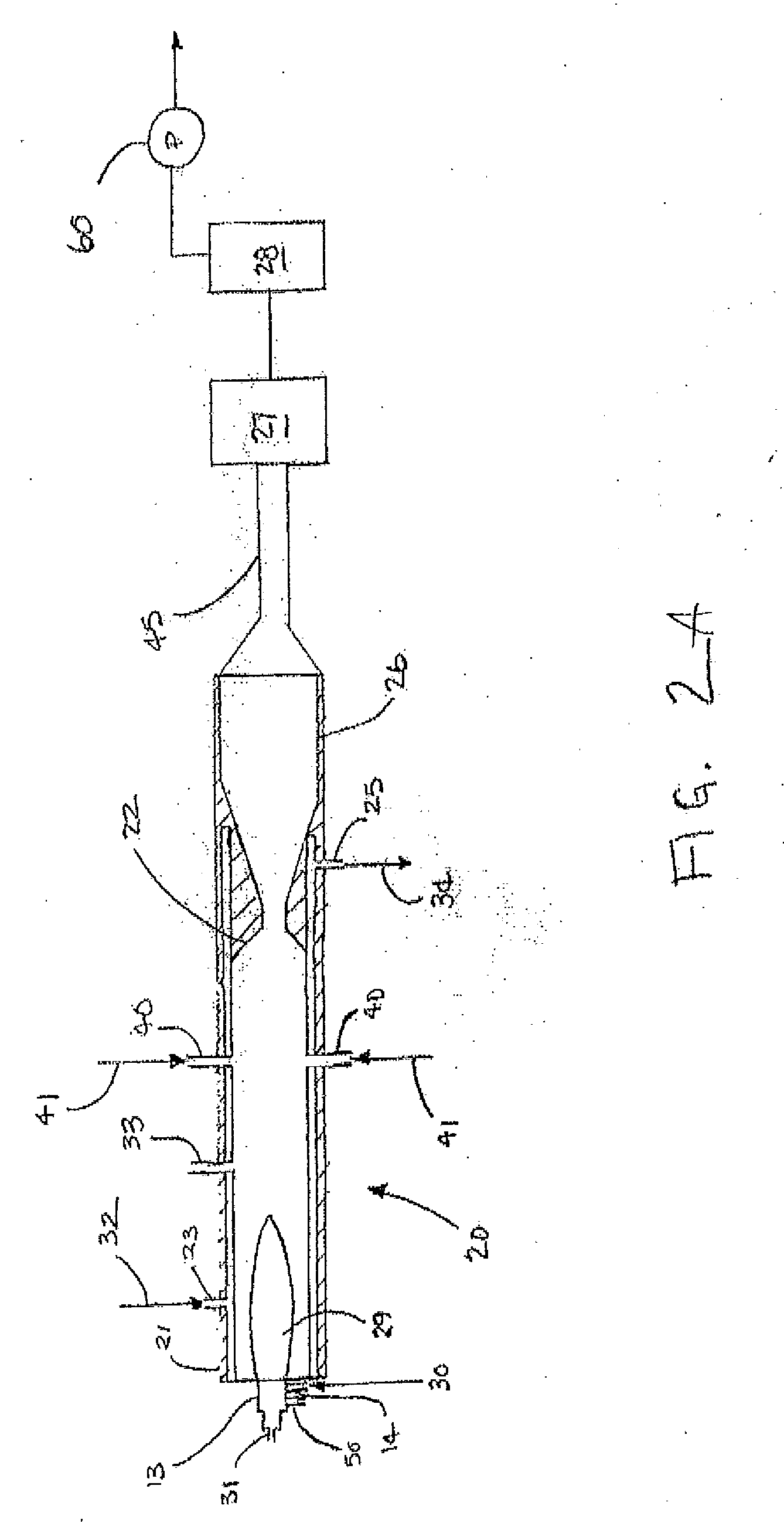Method and apparatus for the production of ultrafine silica particles from solid silica powder and related coating compositions
a technology of solid silica powder and production method, which is applied in the direction of silicon compounds, sublimation, separation processes, etc., can solve the problems of fumed silica manufacturing, liquid volatile silane materials, and relatively high cost of compounds
- Summary
- Abstract
- Description
- Claims
- Application Information
AI Technical Summary
Benefits of technology
Problems solved by technology
Method used
Image
Examples
particle example 1
[0081] Particles from solid precursors were prepared using a DC thermal plasma reactor system of including a converging-diverging nozzle of the type generally described in U.S. Pat. No. RE37,853 E. The main reactor system included a DC plasma torch (Model SG-100 Plasma Spray Gun commercially available from Praxair Technology, Inc., Danbury, Connecticut) operated with 60 standard liters per minute of argon carrier gas and 25 kilowatts of power delivered to the torch. A solid reactant (precipitated silica, WB-10 grade, available from PPG Industries) was fed to the reactor at a rate of 1.5 to 2 grams per minute through a gas assistant powder feeder (Model 1264, commercially available from Praxair Technology, Inc., Danbury, Connecticut) located at the plasma torch outlet. At the powder feeder, about 4 standard liters per minute argon were used as carrier gas. Oxygen at 10 standard liters per minute was delivered through two ⅛ inch diameter nozzles located 180° apart at 0.69″ downstream ...
particle example 2
[0083] Particles from silica solid reactant was prepared using the same apparatus and operating conditions as Particle Example 1, except that the plasma power input was 24 kilowatts and the reactor length was 7.7 inches.
[0084] Using these conditions, the measured B.E.T. specific surface area of the resulting ultrafine silica particles was 380 square meters per gram using the Gemini model 2360 analyzer and the calculated equivalent spherical diameter was 7 nanometers.
particle example 3
[0085] Particles from silica solid reactant was prepared using the same apparatus and operating conditions as Particle Example 1, except that the reactor length was 13.7 inches and the quench air was injected at the quench gas injection port at a rate of 60 standard liters per minute.
[0086] Using these run conditions, the measured B.E.T. specific surface area of the resulting ultrafine silica particles was 293 square meters per gram using the Gemini model 2360 analyzer and the calculated equivalent spherical diameter was 9 nanometers.
PUM
| Property | Measurement | Unit |
|---|---|---|
| particle size | aaaaa | aaaaa |
| size | aaaaa | aaaaa |
| spherical diameter | aaaaa | aaaaa |
Abstract
Description
Claims
Application Information
 Login to View More
Login to View More - R&D
- Intellectual Property
- Life Sciences
- Materials
- Tech Scout
- Unparalleled Data Quality
- Higher Quality Content
- 60% Fewer Hallucinations
Browse by: Latest US Patents, China's latest patents, Technical Efficacy Thesaurus, Application Domain, Technology Topic, Popular Technical Reports.
© 2025 PatSnap. All rights reserved.Legal|Privacy policy|Modern Slavery Act Transparency Statement|Sitemap|About US| Contact US: help@patsnap.com



